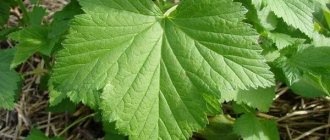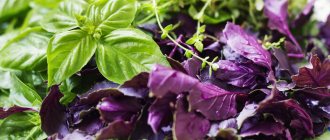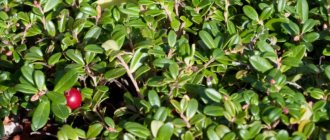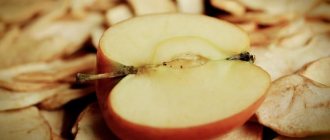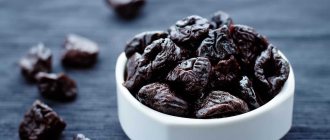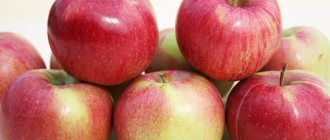Is it possible to dry basil?
Using fresh herbs year-round is a difficult task; purchasing them in winter is not always possible. In this case, the solution to the problem is to prepare dried herbs at home. Basil is dried in several ways. During the process, it is taken into account that the plant should not be exposed to direct sunlight - in this case, it will lose its entire supply of vitamin C.
Important! Basil should not be consumed by people with coronary heart disease, thrombophlebitis, hypertension, or those who have had a myocardial infarction.
Don't want to dry it? Let's freeze it!
Basil can not only be dried for the winter, but also frozen. Many consider this method to be the most optimal, since all the beneficial substances, including essential oils, are preserved in the plant as much as possible. Collect fresh leaves from the plant, do not subject them to any processing, just finely chop them. Place the basil on a tray in a single layer and place in the freezer for 4 hours. Then the finished product can be poured into a plastic bag, carefully tied and sent for long-term storage until used.
Advantages and disadvantages of this harvesting method
A significant advantage of this method is that a properly dried plant retains its rich chemical composition:
- vitamins A, C, K, E;
- manganese;
- iron;
- zinc;
- copper;
- phosphorus;
- selenium;
- glycosides and saponins;
- essential oils;
- tannins;
- phytoncides and sugars.
Beneficial properties of dried basil:
- replenishment of missing vitamins during diets - strict diets lead to a deficiency of nutrients, and fresh or dried basil replenishes their deficiency;
- cleansing the body - the plant helps remove toxins from the body;
- antiseptic and anti-inflammatory properties - the plant alleviates influenza, improves the functioning of the gastrointestinal tract, soothes toothache and relieves inflammation of the larynx and genital organs.
- dried herbs stimulate brain function and calm the nervous system.
The disadvantages of drying are technical in nature:
- you will need special equipment - microwave, electric dryer, etc.;
- you will have to take care of the place where the greens will be stored before drying - it should be dry, dark and well-ventilated.
Selecting and preparing basil for drying
Leaves are used as raw materials, excluding sticks, since they are rough, or flowers - it depends on the taste preferences of the cook.
The collected raw materials are sorted and washed with running water. Wet herbs are not used for drying, so the basil is shaken off and then laid out on a towel or paper in one layer. In this form, the plants are left in a dry and dark place until all the moisture has evaporated.
Important! You cannot dry basil on newspaper, as printing ink is poisonous and is absorbed by the plant.
When to collect it for drying for the winter
Basil is cut during the summer before or during its flowering . At this moment, the flower contains the largest amount of microelements (zinc, copper, manganese, sodium) and aromatic substances, and the stems have not yet become coarser.
The harvest is harvested twice - in July and at the end of September. It is better to pick the leaves on a dry, sunny morning - at this time they are quite dry.
Important! Air circulation, shade and warmth are the most important conditions for proper drying.
Methods for drying basil
If there are no special devices, choose one of the natural drying methods.
Bunches
For drying, young branches with 8-12 leaves are cut in bunches. The stems are washed with water, dried and tied into bundles of no more than 7 pieces. - this way the plants will dry out faster.
The finished bundles are hung on a rope at a distance of 15-20 cm from each other in a dry, dark and well-ventilated place. A barn, attic, or balcony are suitable for this purpose. After 2-3 weeks, the basil will be ready.
Sheets
For this method you will need freshly cut basil leaves. Algorithm of actions:
- Wash the leaves and dry.
- Line a baking sheet with paper (you can use window screens instead).
- Place leaves in 1 layer.
- To protect the greens from dust and insects, cover the workpiece with a nylon net or gauze. Ordinary fabric cannot be used, since its dense structure will interfere with breathability, and then the basil will be blocked and become unusable.
- Place the pan in a dark and ventilated place.
- After 2 weeks, place the dry leaves in convenient containers, tightly close the lids and store them.
In crushed form
This method differs from the previous one in that all prepared raw materials are crushed, and an oven is used as an auxiliary device.
How to proceed:
- Wash and dry the basil.
- Chop the leaves, but not too finely.
- Line a baking tray with baking paper and place chopped plants on it in a thin layer.
- Preheat the oven to +40°C and place a baking tray.
- Dry the spice for 4-6 hours, and open the oven door every two hours, leaving a small gap for 20-30 minutes.
- After drying, allow the workpiece to cool, and then place it in convenient containers and store it.
In a refrigerator
Supporters of original drying methods can try drying basil in the refrigerator. Cold will cope with this task no worse than high temperature. Place the leaves on paper towels or a Styrofoam tray and refrigerate for 5 to 7 days. Stir the drying herbs occasionally. The lower the temperature in the refrigerator compartment, the faster the product will be ready.
Basil is an annual herbaceous cultivated plant that housewives often grow in beds or pots. The amazing properties of this herb have made it extremely popular and in demand in cosmetology and even in medicine. The fragrant aroma of basil will transform any dish, and its unique composition will fill the menu with vitamins and valuable elements. At one time, healers used the herb as a remedy to treat many diseases, achieving significant improvement in the patient's condition. Thanks to this, in Rus' at one time basil was considered a royal herb, and in India - a sacred plant.
Of course, it is most convenient to use fresh basil sprigs and leaves for your purposes. But it is not always possible to constantly maintain the availability of a young harvest. It is advisable to simply prepare fragrant grass in the summer for the winter. One of the most accessible and convenient ways to preserve a plant and all its properties is drying. Today we will talk about it and tell you when to collect and how to properly dry basil at home.
When to harvest basil, and which parts of it can be dried?
For drying, as well as for using fresh basil, you need to take young branches of four to six leaves, preventing them from flowering. It is at this stage of plant growth that the maximum amount of essential oils and valuable properties is concentrated in the leaves. Collection is recommended to be done in dry weather. You can dry both stems and leaves. The latter are perfect for adding to various dishes, and the stems can be used to flavor and infuse vegetable oil on them or to enrich the taste of various marinades and pickles.
Undoubtedly, the easiest way to dry is to hang twigs collected in small bunches in a dry, warm and well-ventilated place. In this case, it is necessary to avoid direct sunlight on the basil, which will contribute to the volatilization of essential oils and the loss of all the valuable and aromatic properties of the herb. It will take about three weeks on average to dry basil in this way.
To speed up the process, you can use the oven or, if available.
How to dry basil in an electric dryer?
Before drying basil in an electric dryer, you need to rinse the sprigs, dry them and tear off the leaves, separating them from the sprigs. We cut the stems into fragments approximately three centimeters long. We lay out the leaves and prepared pieces of stems on different trays and place them in an electric dryer. The temperature during drying should not exceed forty degrees, then the leaves will remain as aromatic, fragrant and healthy as fresh.
The stems take longer to dry than the leaves and, unlike the latter, which will take about six hours, will remain in the electric dryer under the same conditions for about a day.
How to dry basil in the oven?
If you don’t have an electric dryer, you can dry the basil in the oven. We prepare the twigs in the same way by rinsing them, drying them, dividing them into leaves and stems and placing them separately on different baking sheets. The temperature during the entire drying process should be maintained at forty degrees, and the oven door should be slightly open to allow moisture to escape. We check the degree of readiness periodically. Depending on the size of the leaves and their juiciness, drying the leaves in this way will take from five to eight hours. The stems will take a little longer to dry, and the time they stay in the oven will depend on their thickness.
Tasty and aromatic herb successfully “registered” on our table. It can decorate any dish, making it more piquant and aromatic. Basil is recommended to be served with kebabs and chops, added to salads, sautés, stews, winter preparations, compotes, and even to make jam. The most aromatic and delicious basil is in the summer season. In cold weather, it is found only in markets. In our article we will tell you how to dry basil at home in an electric dryer, in the fresh air, and even on a windowsill in an apartment, the main thing is that the greens are not exposed to direct sunlight. It is advisable to store dried basil in a dry container with an airtight lid in a cool place.
Taste Info How to dry...
How to air dry
When drying basil in the open air, consider the disadvantages of this method:
- humidity and ambient temperature affect the duration of drying - the process can take several days or weeks;
- Dirt and dust settle on the workpieces if they are not protected;
- in the open air, essential oils evaporate from herbs, which makes the aroma of the dried product weaker;
- When exposed to direct sunlight, the color of basil fades.
Dry the spice in the open air in any convenient way: in bunches or leaves. Optimal conditions are air temperature +22...+24°C, humidity 60-70% and no direct sunlight.
In the oven
Before drying the herbs, they are washed and dried. To do this, the leaves are laid out on a cotton towel to absorb moisture. The towel is changed as needed. After 3-4 hours, the drying procedure begins.
Algorithm of actions:
- Preheat the oven to +100°C.
- Place parchment paper on a baking sheet and a thin layer of basil leaves on top.
- Do not close the oven for 2 hours. The leaves will shrink several times, but their aroma will intensify.
In the microwave
The main advantage of drying in the microwave is that the desired result is obtained in a matter of minutes.
List of actions:
- Collect raw materials, wash and dry.
- Place a napkin on a plate.
- Place basil leaves on top in a single layer.
- Turn on the microwave at 600-800 W.
- Wait 3-4 minutes.
After this, the dried herb is sent for storage or immediately added to dishes.
In an electric dryer
To dry basil this way, follow the following algorithm:
- Wash the collected leaves, shake off, and leave to dry.
- Place the grass on a tray in one layer.
- Set the temperature to +35°C.
- Change pallets every hour.
Dried basil is ready in 4 hours.
Storage issues
It is best to store dried basil for tea and other dishes and drinks in:
- paper bags;
- glass jars;
- linen bags.
It is better to give preference to hermetically sealed glass containers. Basil is highly sensitive to fluctuations in humidity and temperature, which leads to a loss of its flavor and aromatic properties.
Like all herbs, dried basil should be stored in a dark, dry, cool place with good ventilation. Shelf life – 1 year. It is during this period that the herb retains its properties and unsurpassed aroma to the maximum. In some cases, it is kept longer, but every day and month the quality of the workpiece weakens. Experienced herbalists recommend storing basil from “season to season” and not waiting until the expiration date.
photo: depositphotos.com/Lovelymama
How and where to apply
Basil pulp is used to make face and hair masks. Such products relieve inflammation, rejuvenate and tone the skin.
Dried basil is added as a seasoning to minced meat, sauces, hot and cold dishes. A universal spice that improves the taste of meat and fish. Dried herbs replace fresh herbs when canning and making marinades.
Some varieties exude a lemon aroma and are suitable for making tea. In folk medicine, this tea is used to treat diseases of the nervous system and increased fatigue. Decoctions are drunk for kidney diseases and respiratory diseases.
How to eat
Dried basil in crushed form is added to the finished dish, for example, to soup or salad. The seasoning is also used instead of pepper in the manufacture of sausages and smoked meat products.
Important! The spice is contraindicated for people with allergies, diabetes and cardiovascular diseases. Pregnant women consume it in limited quantities.
How to store dried herbs
Dried leaves are stored whole or crushed to the desired fraction with the palms of your hands. Place the seasoning in a glass container and seal it tightly.
You can store dried herbs in a cloth bag or paper bag. In this case:
- choose only natural materials;
- especially carefully protected from high air humidity.
Storage in a closed container is preferable, because the smell of the spice is preserved more reliably outside the air. A dark, cool place is suitable for basil.
The smells of summer greenery will brighten up the harsh winter. Properly dried basil can be stored for a long time and is suitable for preparing first and second courses, salads and homemade preparations. Such a simple and easy way of processing fragrant summer greens will preserve not only the beneficial properties and the maximum amount of vitamins in the finished seasoning, but also the bright taste and unforgettable spicy aroma.
